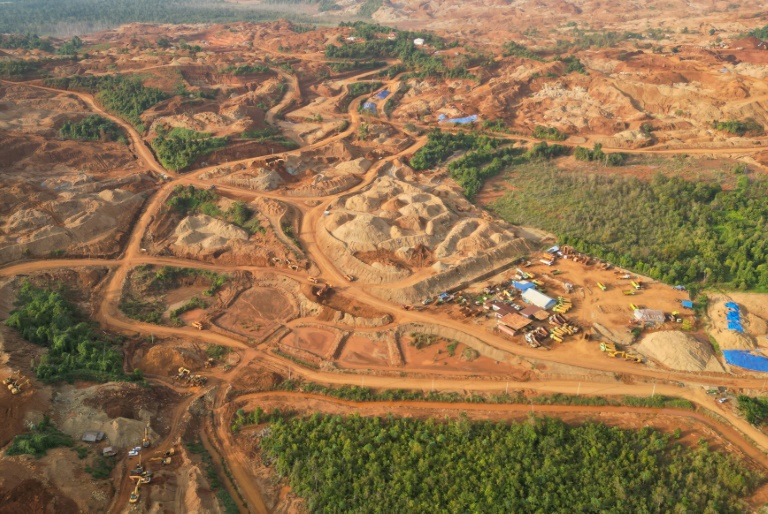
SATELLITE IMAGES SHOW DEFORESTATION TOLL OF INDONESIA MINES
More than 700,000 hectares of forest in Indonesia have been cleared for mining since 2001, including large tracts of primary forest, a new analysis using satellite data has found.
The TreeMap, a conservation start-up, used high-resolution imagery from several satellites and two decades of data from the long-running Landsat programme to map mines and related infrastructure and track deforestation.
It estimates that mining -- including pits, processing facilities, tailings areas and roads -- resulted in the clearing of 721,000 hectares (7,210 square kilometres) of forest between 2001 and 2023.
An estimated 150,000 hectares of that was primary forest, areas with high carbon stock and tall trees that include intact old growth, according to the analysis released this week.
The group's Nusantara Atlas shows the striking disappearance of forest cover in time-lapse sequences as mines and associated infrastructure are developed.
The mines were identified using a combination of "visual interpretation and machine learning", explained David Gaveau, founder of The TreeMap.
"Open-pit mines are easily identified... by their concentric lines of benches cut into the pit sides for coal mines, or by their tendency to be located along river banks, for gold," he explained.
All types of mines also have distinctive "spectral signatures" -- a measurement of energy -- that are characteristic of bare land areas and are easily detectable, he added.
The group cross-referenced their findings with official maps of mining concessions, local media articles and NGO reports.
Using historical satellite images also allowed them to detect now-abandoned mines that have become overgrown.
The impact from coal mining was by far the largest, accounting for around half of all the deforestation tracked, followed by gold, tin and nickel.
And while the data showed a peak in deforestation in 2013, the problem has begun growing again in recent years.
By 2023, mining was linked to an annual loss of nearly 10,000 hectares of primary forest, Gaveau said.
Indonesia's environment ministry did not respond to a request for comment on the analysis.
The government's latest public figures, which are not broken down by cause, say over 73,000 hectares of forest area was lost in 2021-22, with more than 104,000 hectares of total deforestation that year, including "non-forest area".
Deforestation linked to mining still falls far short of the forest loss caused by palm oil and wood plantations.
But it is an area of growing concern, with Indonesia's reliance on coal increasing and the country looking to expand exploitation of its nickel reserves.
Indonesia has the world's largest reserves of highly sought-after nickel, a crucial component for the batteries used in electric vehicles.
A 2022 study found that 80 percent of global forest loss linked to mining occurred in just four countries: Indonesia, Brazil, Ghana and Suriname.
Indonesia was by far the worst affected however, accounting for nearly 60 percent of the global mining-linked forest loss tracked in the study.
sah/rsc/cwl
2024-07-05T03:26:18Z dg43tfdfdgfd